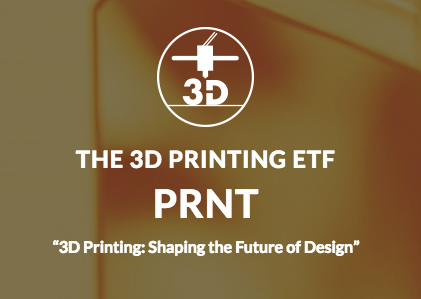While the crowd may have moved on, the smart investors have returned to the 3D printing sector in force as this review of recent investments, venture capital activity and other finance news in the 3D printing industry demonstrates.
A wave of deals by venture capital firms increasing investment or taking first steps in the 3D printing industry is apparent from the news over the past quarter. Later stage investment is also evident with multinational companies seeking to establish footholds in the market by acquiring valuable intellectual property and market share through acquisition.
In terms of deal size, the news that GE made a $1.4 billion bid for two European 3D printing firms at the start of last month, takes the top prize. GE’s bid price was a 40% premium on previous the last trading price for the two companies. When the U.S. conglomerate announced plans to acquire Sweden’s Arcam Group AB (STO:ARCM) and Germany’s SLM Solutions (ETR:AM3D) it was not only shares in the takeover targets that rose.

The sector as a whole was buoyed by the GE news. 3D Systems (NYSE:DDD) began the quarter with a share price of $13.41 and closed at $17.95, although the price has since dipped marginally to $15.65. New York investment advisors, ARK launched their 3D printing EFT, (BATS:PRNT) in July and the fund has increased by almost 16% since then.
Headline Investors in Silicon Valley Startup
Carbon is a name likely more familiar to followers of financial matters than some of the others in this recap. Headline investors include Google Ventures,Sequoia Capital, and the Autodesk Spark Investment Fund. As we previously reported the Silicon Valley based 3D printing company added an additional $81 million in financing recently.
As well as investing, Autodesk (NASDAQ:ADSK) are also seen as a valuable opportunity for investment by hedge funds. The $16 billion hedge fund, Soroban Capital have doubled their stake in the Californian 3D printing software company during the past three months to bring their holdings to 8% of Autodesk’s issued share capital.
At the other end of the spectrum, at least in terms of deal size, a number of freshly inked investments by venture capitalists will bring further innovation in the sector, and potentially enrich backers.
These include Botfactory who raised $1.3 million, Polar 3D who secured $2 million and 3D printing startup Dagoma with $3.3 million. The finance will be used to expand operations both geographically and to advance the companies on their respective paths to market. Botfactory’s JF Brandon echoed a common sentiment among many startups when he commented on the investment saying,
While the road has been long and tough, we believe that fundamentally in the end we are changing the way people look at electronics in the same way 3D printing is changing the way people look at physical objects.
Other recent investments include a further $12 million for the NASDAQ listed Nano Dimension (NASDAQ:NNDM) and their 3D printed electronics machine the Dragonfly 2020, which is expected to be available in 2017 according to sources at the company.

3D Printing Enters the Next Phase
The Dragonfly 2020 is an ambitious project that combines hardware, software and even nanochemistry and is one that the company acknowledge will be a tough task to successfully pull off. Other recent deals involve balancing the requirements of fewer complex systems, but are nonetheless interesting.
For example Vectary are a software startup who have recently raised a further $2.5 million, adding to funds already committed by investors. While Ultimaker, a Netherlands based 3D printer manufacturer, received a loan of $16.5 million to advance R&D efforts and launch a pioneering educational program across the European Union.
In July Zortrax SA, the Polish 3D printer manufacturer, reported raising $11 million for “R&D, development of new products, marketing, and possible acquisitions.” The series D funding came from a single investor and Rafal Tomasiak, CEO, commented “we acquired a stable, trusted shareholder. The new capital will be, without a doubt, used to accelerate the business development and enhance the market position of Zortrax.”

In August, we reported that 3D Hubs had received $7 million in series B financing and in the following month news of more investments came from Australia. In September Falcon Minerals (ASX:FCN), a publicly listed company on the Australian Stock Exchange (ASX) who were previously engaged in mining activities, amended the terms of their acquisition of Robo3D via Albion 3D Investments Pty Ltd. The company intend to raise approximately $3 million and have engaged the services of Forrest Capital as advisors on the transaction.
It would be unwise to expect all of these investments to payoff, indeed the reason VCs hold multiple investments is to diversify risk, with an expectation that one or two the basket of companies will reap profits sufficient to cover losses on the others. However, with recent articles on several prominent news sites heralding the death of 3D printing this resurgence in investor confidence and the general mood of optimism in the sector should provide a useful counterpoint. It is also interesting to note for context that during the most recent quarter the value of total deals in Silicon Valley amounted to $2.7 billion.
At 3D Printing Industry we want to bring you the inside track on the latest developments in all aspects of the additive manufacturing world, including finance. We aim to provide useful insight for strategic decision making and are always interested to hear about readers exploring opportunities in the industry. And if you want to share news of recent investments or developments, please contact us.



